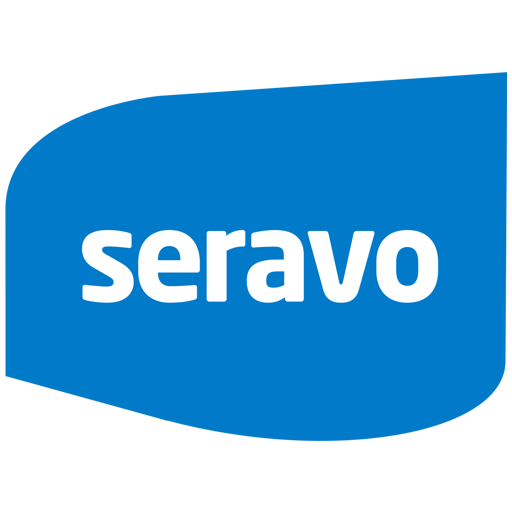For a lot of people, Search Engine Optimization simply means installing one of the popular SEO plugins in WordPress, while it, in fact, is much more than that. This article will focus on the technical side of SEO.
Search Engine Optimization
Some visitors love us more than others. One of our more raving fans is the Google web crawler Googlebot, crawling our hosted sites millions of times every single day, just like robots of its kind do. They are there to scan for new content, learn about changes, and discover if new sites have been created; collect whatever new data is there to be found.
To understand the power of internet search engines here is something to think about: the single biggest source of visitors that reach our clients’ sites come through search engines, predominantly from Google. Social media doesn’t come even close to this, nor does any other source of traffic.
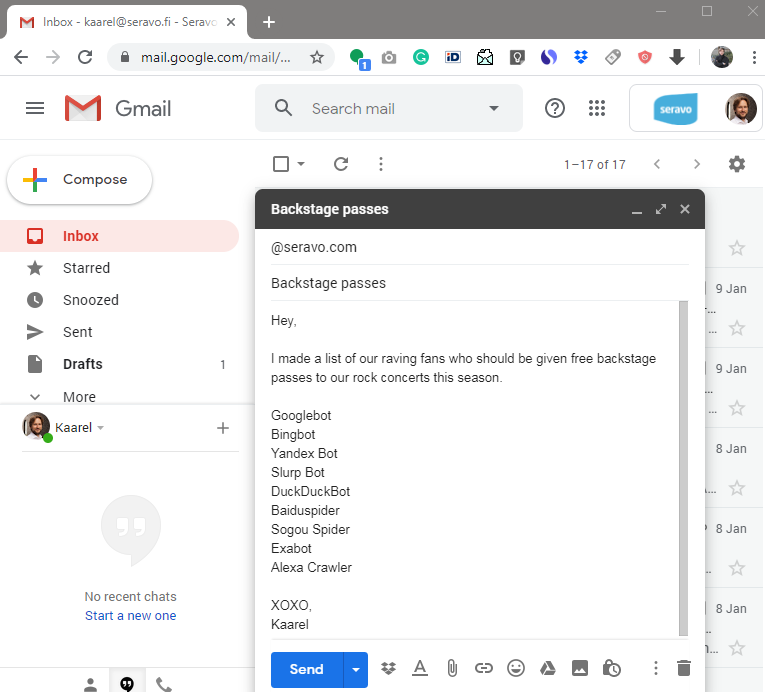
So it is no wonder that there are so many of us trying to figure out the best possible strategy to perform better in search, to get to the top of the indexed results.
No Magic, Just Logic
Before you jump to outsmarting these bots (as you would immediately – right now, right here – like to see the results) we have some tips to consider. The first thing to know is that there is no magic wand that you can wave to get to the top. There actually is something that works: pay Google by buying their keyword-targeted ads. This is the safest and fastest way to the top, with the added benefit that it will not ruin your organically developed positions.

How the Google ranking exactly works is not known and trying to spam or fool the system is likely to only penalize the perpetrator. There are plenty of people that claim to be SEO superstars with intimate knowledge of the secrets and hacks to get to the top of search results.
However, due to search engine companies constantly improving their search, applying this wisdom might backfire later on (if not right away) and you might end up losing more than what you gained. What’s even worse, the optimized site may become worthless when Google stops indexing it. So, even if these secrets might have been true at some point, it’s not going to matter that much in the long run.
Best SEO Tip EVER!
Google has shared with us the best SEO tip ever: focus on your business. Search engines like Google are in the search business. They keep up the quality of search results and improve the search experience. Likewise, we should all focus on our businesses. Build a better product or service, gain trust and respect, and then you are more likely to show up on the desired spots of the search results.
If you make your site good for humans, then Google will do its part by making sure that the people who should find you will have a way to find you. That is of course if you have something to index. You should make sure that your website is a good representation of your business by creating great content. And make sure you are using a good platform to host this content.
If you make your site good for humans, then Google will do its part by making sure that the people who should find you will have a way to find you.
WordPress is Great for Your SEO
There is no match for WordPress. Powering more than 60 million websites, it is pretty great for SEO out-of-the-box: It has great standard themes. It is great for hosting an e-commerce site, a blog, or almost any type of website to showcase your content. And it’s great if you wish to run a site with all of those functions combined. It can be quite beneficial having it all under one roof instead of spreading the different parts onto several smaller sites and diluting your content.
WordPress is likely to give a boost to the reputation of your site. It’s a top-notch open-source website platform unlike another, running a third of the websites in the world. You can’t go wrong with it. Whoever is trying to convince you otherwise, is most likely just plain wrong.
Tech Side of the SEO, Not Content
As we promised to share technical tips, be aware that this article will not be about creating more appealing content, getting better at social media, growing popularity or other tips from that spectrum.
Built-in Seo-Friendly Features on WordPress
Search Engine Visibility Checkbox
As we already said, WordPress is already pretty great when it comes to SEO. However, sometimes something as simple as ticking a checkbox may cause a lot of trouble and this is the first thing you should check.
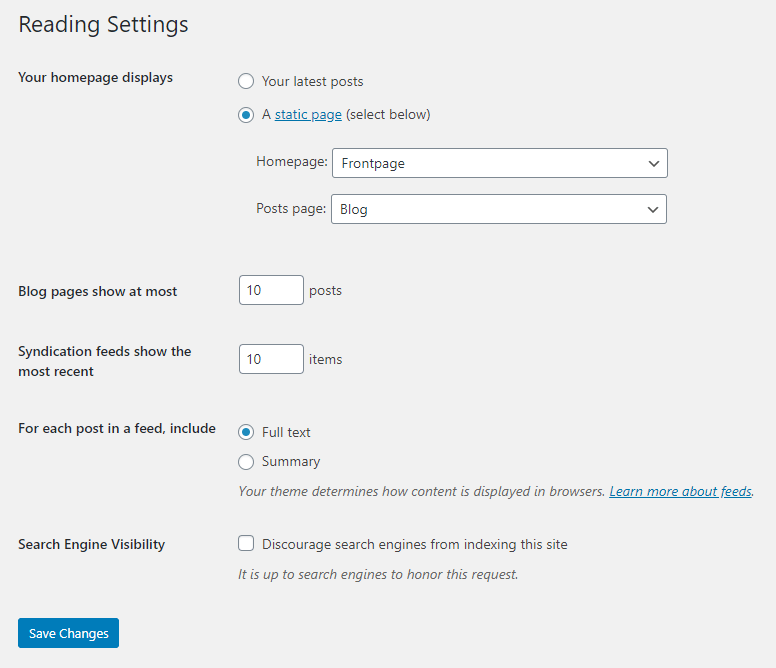
It’s natural that sometimes developers simply forget to untick the Search Engine Visibility tick-box which you can find in the Settings. If this is not set properly, your page might not get indexed. Nothing is broken per se, just this small thing has been left without attention.
If this box is checked, the robots.txt file will disallow indexing by the search engine crawlers. The option is there because sometimes it takes time to build a site and you just might not want to be open for business while you are working on it. There might be other reasons why people have decided to tick this box but by having done it, they are in effect hidden from Google and the like.
Robots.txt File and WordPress
Robots.txt is a text file that site owners or their CMS can create to tell the search engines how to crawl and index the pages on their site. WordPress generates the robots.txt on the fly so there is no need to create an actual file on your web server. Instead, familiarize yourself with the function do_robotstxt and do your modifications the WordPress way.
Pretty URLs for Permalinks
A permalink is the web address used to link to your content. The URL to each post should be permanent and never change — hence the name permalink. But it is also beneficial if this permalink is visually prettier for visitors and crawlers.
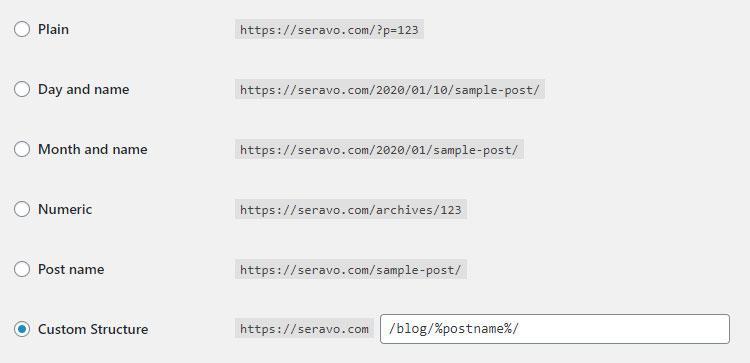
The default post link in WordPress looks like http://example.com/?p=123 and is generally known as “ugly”. You can choose another built-in format for your links under the Permalink Settings, but it is recommended to go all the way to make your permalinks as pretty as possible: WordPress offers you the ability to create a custom URL structure which is a good way to improve the aesthetics, usability, and forward-compatibility of your links.
Image Settings
Something that is often overlooked is the fact that bots gather all sorts of metadata for the search engines to use. When it comes to images, it’s important that you take advantage of things like alternative text and the caption – also for the sake of accessibility. These descriptions help visually impaired people navigate the site and make it easier for them to understand the content, to “see” what the image in that particular context is about. The bots also use this information to improve their indexing.

Language Markup
Although search engines can easily autodetect the language of your content, this WordPress setting also helps bots be better at it. And it is partly also the accessibility matter. If your content is in English, but you administer the site in some other language, the theme you are using might call up the phrases like “Comment” “Leave a Reply” etc. in the language you have set under the settings page, not in the language you are publishing the content in. And this does not look very nice.

So, you might want to think about this as well, if you’ve got it set up as it should. If you get these things right, it will improve your performance in the local google index results: for example google.de for german content, or google.it in Italian.
SEO Friendly WordPress Themes
All the themes on WordPress.org have gone through a basic theme review. These days they are likely already responsive by default, which is a good thing. You just make sure that they follow good semantic practices and follow HTML5 standards.
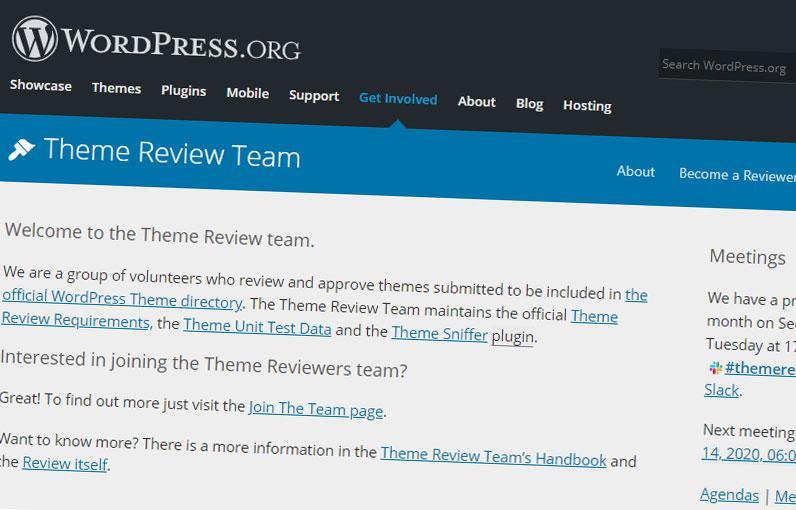
Striving to meet these standards is a good thing also if you plan to create a theme of your own. Make sure that your code is clean. And it might be a good idea to explore microformats or schema.org vocabulary if you haven’t done so already. Microformats help you define the details of the segment in more depth, leaving less room for bots to guess what it might be.
Custom Post Types
You might run into the need of creating a custom post type if the standard selection of pages and posts is not enough for you. Whether you use a plugin or you build the custom post types yourself, you should hide away custom post types that are not intended to be public. Search engines might mistakenly take it as a sign of a broken site if the content from these pages is missing.
Remember that the sitemap.xml will list everything on the sitemap, also the custom post types that you might wish to hide. Since WordPress doesn’t have any functionality for sitemap customization of its own, you are going to have to use a plugin for hiding the bits not intended for search engines and traffic.
SEO plugins
The SEO Framework
There are some plugins more known than others. For example, one of the popular SEO plugins is Yoast. These are generally popular because they come from a trusted and reputable provider. But at the same time, they might also be their own worst enemies, because they can become packed with too many features and will make your site heavier than it needs to be.
This is, of course, more of a personal choice and preference. Going with one of these is not necessarily a bad choice. However, we have learned that a plugin called SEO Framework has a smaller and leaner codebase. Compared to Yoast SEO, it will be faster and lighter. It also creates sitemaps by default that look great. And it doesn’t have those annoying ads which you might get with Yoast or some other SEO plugins.
You can test around and see if this works for you as it’s possible to move SEO data with the SEO Data Transporter plugin.
Other benefits:
- Sharing your site content to social media looks also great as SEO Framework generates content for Opengraph (FB) and Twitter cards for you.
- Helps to avoid duplicate content
AMP – Accelerated Mobile Pages
This is a slightly controversial tip. We are not very keen on this ourselves but it’s up to you to decide whether it is something that you could benefit from. It might be that Google has gone a step too far in trying to make websites load lightning-fast for their end-users, making some groups in the development world question if this approach poses threats to the future of the internet.
But let’s not dive into the controversy. This is basically Google trying to create a library of fast websites, so they could load pages from their own servers, making the experience better for the end-user. User-first is something the AMP developers are stating every step of the way. So if you wish to use AMP, there are plugins you could try.
Redirection
It’s not possible to leave this one out from the list. Redirection is very useful for fixing broken links. Every once in a while, as your business grows, things change and the content of your website also changes. This might mean that outdated content might be removed, some content on your posts and pages might be merged together or whatever the reason, the old links will no longer exist.
If external backlinks still bring traffic to these pages, and all they get is “page not found”, it will be a disappointment for the visitor, and it will be something that will also be negative to your SEO. Letting links rot is as bad as it sounds. But you can fix this easily if you start using Redirection, a WordPress plugin that allows you to redirect the traffic referring to broken links, to the new locations.
Multilingual Plugins – Polylang or MultilingualPress
WPML is one of the most known plugins in this niche but it is popular because of its early kickoff, not because of its technical strongpoints. It is often heavy, faulty and problematic – making websites slow. This is why we recommend trying Polylang or MultilingualPress.

Using these plugins, the upside is also that it will automatically make hreflang attributes to your content and links, which helps bots understand the language of that particular content.
Good Hosting and Active WordPress Upkeep
Talking about SEO, we also have to talk about site speed. Site speed is certainly one of the more important ranking factors as it is directly linked to positive user experience. Imagine if Google was bringing you only the links of slow websites? Could you imagine the level of frustration you might get? Nobody likes to wait. Google knows this. We know it. And you know it as well.
This is why the features of the server you are using are important. Does your hosting company provide a fast and secure server? Does it follow the industry-standard HTTP/2 instead of the legacy HTTP/1.1?
You can read more about site speed and server tips from our post “5 Key Reasons Why Your WordPress Site is Slow”. But in general, Google wants you to keep your site healthy and fast, and therefore a trusted hosting provider and server environment that is actively maintained.
That’s a Wrap
Like always, there is plenty more that you could do. But remember that Google wants you to focus on your business. This is also the best piece of SEO advice around, as we stated at the beginning of this article.
WordPress is there to help you focus on sharing your story, product, or service – thanks to the open-source community contributing to this mission, they are brilliant at it. We, in turn, are here to help you with WordPress hosting and upkeep so you can focus on your business and make sure that the content on your website is aligned with what you do. Follow these tips and it’s only a matter of time when your position in search engine results will improve.
